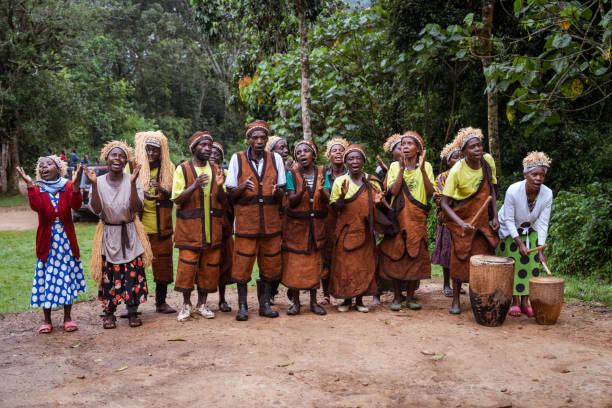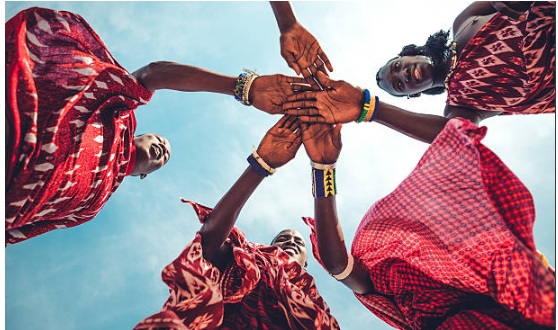Are you looking for the wealthiest tribes in Uganda? Search no further, since this article will provide you with information about Uganda’s richest regions. Uganda’s richest tribes are well-known for their significant economic impact on the country’s finances.
Uganda is home to a diverse range of ethnic groups, each contributing distinctively to the country’s cultural, social, and economic growth.

Top 10 Richest Tribes In Uganda
Among them, some tribes have grown as economically prominent due to historical advantages, resources, business acumen, or political power. I’ve produced a list of Uganda’s wealthy tribes that you should be aware of.
1. Baganda Tribe
The first tribe on my list of Uganda’s richest tribes is the Baganda, Uganda’s largest and most economically powerful tribe, owing to its closeness to Kampala, the capital and economic hub.
It is safe to conclude that the Baganda tribe achieved this feat due to their large population in Central Uganda (Kampala, Mukono, Wakiso, Mpigi).
Their historical position as Buganda Kingdom leaders has given them political power. They control business, real estate, and agriculture in the central region.
2. Banyankole Tribe
Banyankole is another tribe with a large number of wealthy members that has influenced Uganda’s economy. They are located in Western Uganda (Ankole sub-region, Mbarara, Bushenyi).
The Banyankole are well-known for raising cattle and producing dairy products. They dominate Uganda’s livestock sector, making important contributions to the country’s dairy and meat industries.
It is interesting to note that their dominance over enormous areas of fertile land has given them a tight grip on agricultural exports like coffee and bananas.
3. Banyoro Tribe
The Banyoro tribe controls Western Uganda, including Hoima and Masindi. The Banyoro tribe is conveniently placed in Uganda’s oil-rich area.
The finding of oil in the Albertine Graben has significantly improved the Banyoro’s economic situation. They gain from job and business prospects in the oil and gas sector, and if oil production increases, their region’s economy will grow even more.
4. Basoga Tribe
The Basoga dominate Uganda’s sugar industry, with extensive plantations and mills in Jinja and the neighboring areas. Jinja is also an industrial powerhouse, with manufacturing, fisheries, and hydroelectric power all contributing to the region’s economic success.
Basoga people are commonly encountered in Eastern Uganda (Busoga sub-region, Jinja, Kamuli, Iganga). Their grip over the Nile River basin places them as major powers in agriculture and energy.
5. Batoro Tribe
The Batoro are known for their rich cultural heritage and economic activities related to tourism, thanks to the natural beauty of their region, which includes national parks like Kibale and Rwenzori Mountains.
With a base around Western Uganda (Toro sub-region, Fort Portal, Kabarole), the Fort Portal is a key tourism and commercial center, contributing to their wealth.
6. Acholi Tribe
Historically marginalized due to conflict, the Acholi have seen economic recovery in recent years, thanks to peace and development programs. The people of Acholi are widely seen around Northern Uganda (Acholi sub-region, Gulu, Kitgum).
Their region is rich in fertile land for agriculture, and they have also benefited from humanitarian aid and reconstruction projects, helping rebuild their economy, particularly in the sectors of education, construction, and agriculture.
7. Bagisu Tribe
The Bagisu, known for cultivating coffee on the slopes of Mount Elgon, dominate Uganda’s coffee industry, which is one of the country’s top exports. This has earned them the status of being one of the richest tribes in Uganda.
Bagisu people are widely seen around Eastern Uganda (Bugisu sub-region, Mbale, Sironko). Their speciality Arabica coffee is highly sought after in global markets, giving them a strong economic foothold in the region.
8. Langi Tribe
The Langi has made important strides in agriculture, particularly in the production of cotton, sesame, and millet. Their economic dominance is growing with the expansion of commercial farming and agro-processing industries.
Investment in agriculture has earned this region the status of being called one of the richest tribes in Uganda. They are located around Northern Uganda (Lango sub-region, Lira, Apac).
It’s also interesting to know that Lira, their main commercial centre, is a hub for trade and business in the northern region.
9. Bakiga Tribe
The Bakiga tribe is recognized for their hard work and great involvement in agriculture, particularly the production of Irish potatoes, tea, and coffee. The Bakiga people, like the Langi tribe, have earned their respect via agriculture and are considered one of Uganda’s wealthiest tribes.
Bakiga people are commonly encountered in Southwestern Uganda (Kigezi sub-region, Kabale, Kisoro). They also play a critical role in trade and business in the Kigezi region, which is an important agricultural zone for Uganda.
10. Iteso Tribe
Finally, agriculture helped the Iteso tribe establish itself as one of Uganda’s wealthiest tribes. The Iteso are the dominant producers of cassava, sorghum, and cattle.
In recent years, they have emerged as major players in Uganda’s agricultural and cereal markets. Soroti town is an important trading hub in the eastern region, connecting them to wider markets and economic prospects.
Iteso people can be seen all across Eastern Uganda (Teso sub-region, Soroti, Katakwi).
How Do These Tribes Dominate Their Regions?
- For Central Uganda (Baganda): As the largest tribe, Baganda dominates the capital city and surrounding districts, controlling key sectors such as finance, real estate, and commerce.
- For Western Uganda (Banyankole, Batoro, Banyoro): This region is characterized by wealth from agriculture (particularly livestock), tourism, and oil production. The Banyankole dominate cattle ranching, while the Batoro and Banyoro benefit from tourism and oil resources, respectively.
- For Eastern Uganda (Basoga, Bagisu, Iteso): The eastern tribes dominate agricultural production, particularly cash crops like sugar and coffee, which are major exports. The Iteso are also strong in livestock farming and trade.
- For Northern Uganda (Acholi, Langi): Though recovering from years of conflict, the Acholi and Langi are making significant strides in agriculture and trade, with large areas of fertile land driving economic growth in the region.
- For Southwestern Uganda (Bakiga): The Bakiga have become influential through their agricultural production and trade networks, contributing significantly to Uganda’s food security.
Frequently Asked Questions on Richest Tribes in Uganda
Which Tribe Was The First In Uganda?
The Bantu are the first people to settle in Uganda and make up more than half of the country’s population.
Which Is The Richest Tribe In Africa?
Given that Igbos are known to be the wealthiest people in Africa, who chose Yoruba for that position? Out of all African tribes, the Igbos have the most independent millionaires in dollars.
Where Do The Rich Stay In Uganda?
One of Kampala’s most prominent neighborhoods, Kololo is renowned for its exclusivity and luxury. Kololo provides the finest of everything and is a favorite among prominent people like executives and diplomats.
Which Tribe Is The Poorest In Uganda?
The Batwa people, one of the poorest groups in one of the poorest countries, Uganda, live in abject poverty daily.
Which Is The Richest Region In Uganda?
Wakiso has the greatest GDP per capita, $3,250, followed by Kampala ($2,655) and Mukono ($1,738). Central and Western Uganda have higher per capita GDP estimates than Eastern and Northern Uganda.
Conclusion
The wealthiest tribes in Uganda are Acholi, Langi, Bagisu, Bakiga, Iteso Tribe, Baganda, Banyoro, Banyankole, Basoga, and Batoro.

